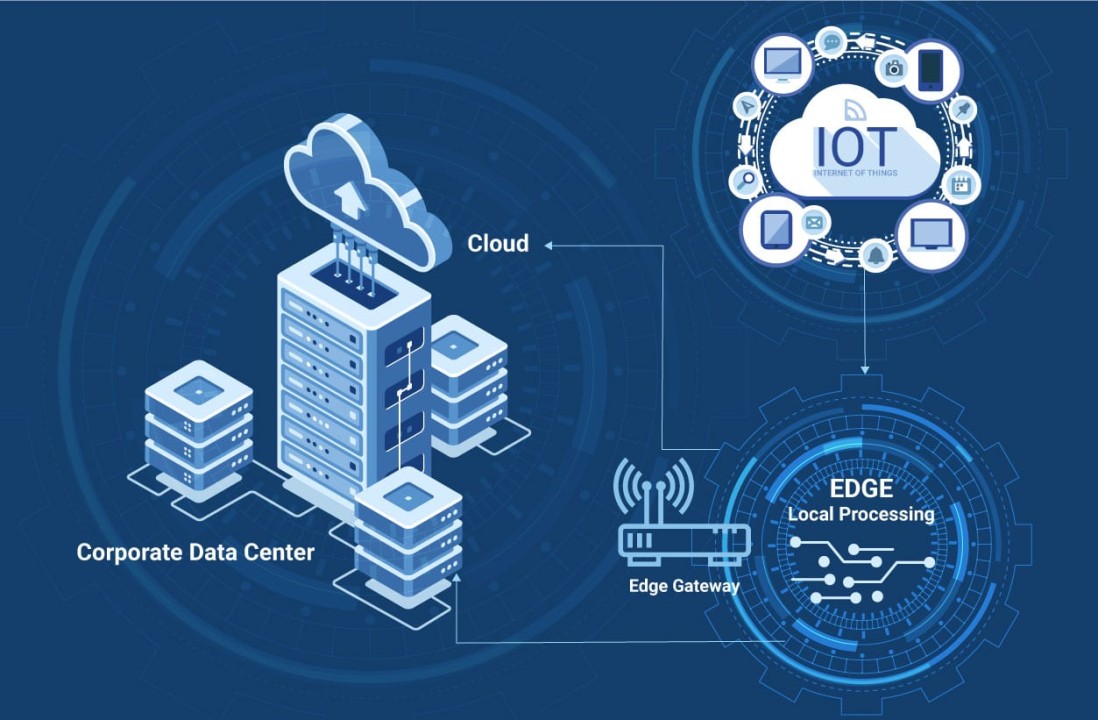
The Convergence of IoT and Edge Computing: Unlocking the Power of Real-Time Insights
Understanding IoT and Edge Computing
At its core, the Internet of Things refers to the network of interconnected devices that collect and exchange data, enabling remote monitoring, control, and optimization of physical processes. From smart home devices and wearable gadgets to industrial sensors and autonomous vehicles, IoT technology permeates various aspects of our daily lives and industries.
Edge computing, on the other hand, involves processing data near the source of generation, typically at the edge of the network or on IoT devices themselves. By decentralizing computation and storage, edge computing reduces latency, conserves bandwidth, and enhances privacy and security, making it well-suited for applications that require real-time responsiveness and local decision-making.
The Synergy of IoT and Edge Computing
When combined, IoT and edge computing create a symbiotic relationship that unlocks new opportunities and capabilities. By processing data locally at the edge, IoT devices can respond in real-time to changing conditions, without the need to transmit data to centralized servers. This not only reduces latency but also alleviates bandwidth constraints and minimizes reliance on cloud infrastructure.
Furthermore, edge computing enables advanced analytics and machine learning models to be deployed directly on IoT devices, empowering them to extract actionable insights and make intelligent decisions autonomously. This distributed intelligence allows for greater agility, scalability, and resilience, particularly in environments where connectivity may be intermittent or unreliable.
Practical Applications
The convergence of IoT and edge computing holds immense potential across a wide range of industries and use cases. In manufacturing, edge computing enables predictive maintenance by analyzing sensor data in real-time to anticipate equipment failures and optimize maintenance schedules. In healthcare, wearable devices equipped with edge computing capabilities can monitor patient vital signs and provide timely alerts in emergency situations.
Similarly, in smart cities, edge-enabled IoT sensors can monitor traffic patterns, detect environmental pollution, and optimize energy consumption, leading to more efficient urban infrastructure and improved quality of life for residents. In agriculture, IoT devices equipped with edge intelligence can monitor soil moisture levels, crop health, and weather conditions to optimize irrigation and maximize yields.
Overcoming Challenges
Despite its promise, the convergence of IoT and edge computing is not without challenges. Issues such as data interoperability, security vulnerabilities, and resource constraints must be addressed to ensure the seamless integration and operation of edge-enabled IoT systems. Additionally, organizations must navigate regulatory and ethical considerations surrounding data privacy, ownership, and consent in an increasingly interconnected and data-driven world
Looking Ahead
As we look to the future, the synergy between IoT and edge computing is poised to drive innovation, reshape industries, and transform the way we interact with technology. By harnessing the power of real-time insights and distributed intelligence, organizations can unlock new levels of efficiency, agility, and innovation, paving the way for a smarter, more connected world.
In conclusion, the convergence of IoT and edge computing represents a paradigm shift in how we collect, analyze, and act on data. By bringing computation closer to the point of action, organizations can unlock new opportunities for innovation and create value in ways that were previously unimaginable. As we continue to explore the possibilities of this transformative alliance, the future looks brighter than ever for the interconnected world of IoT and edge computing.